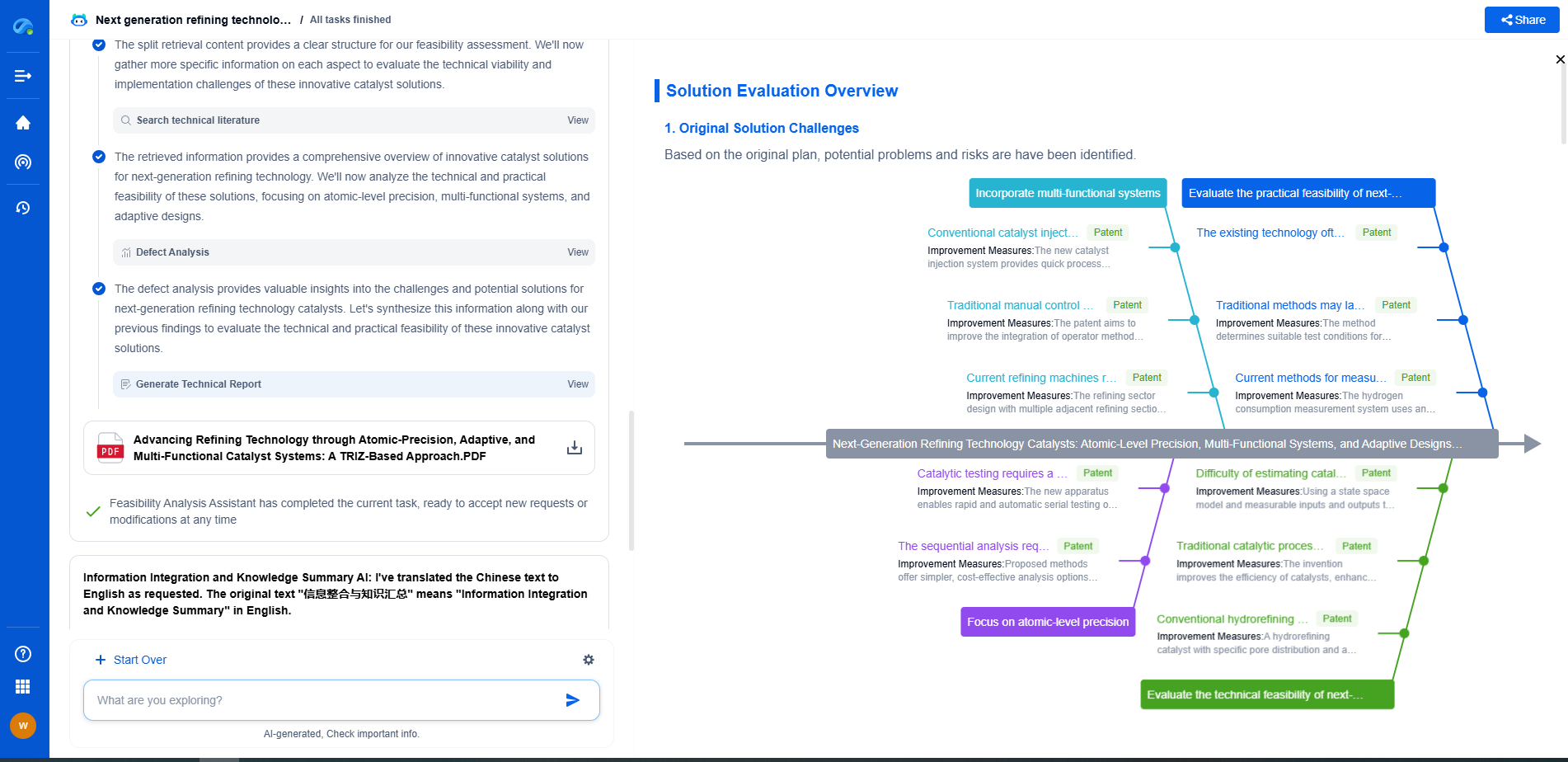Laser welding robots vs arc welding robots: Which to choose?
JUN 26, 2025 |
In the world of modern manufacturing, welding robots have become indispensable assets. These automated solutions not only enhance productivity but also ensure precision and consistency in welding tasks. However, choosing the right type of welding robot for your needs can be a daunting task given the variety of options available. Among the most popular types are laser welding robots and arc welding robots. Each comes with its own set of advantages and drawbacks, making the decision highly dependent on specific requirements. This article explores the key differences between the two, helping you make an informed decision.
Understanding Laser Welding Robots
Laser welding robots utilize a concentrated beam of light to fuse materials together. This method is renowned for its precision and speed. One of the major advantages of laser welding is its ability to produce narrow, deep welds at high speeds, making it suitable for tasks that require intricate detail and minimal thermal distortion. Additionally, laser welding is ideal for joining dissimilar metals and is often used in industries such as aerospace, electronics, and automotive manufacturing.
The precision of laser welding robots also translates to reduced waste and lower post-processing costs. However, the initial investment for laser welding equipment tends to be higher compared to arc welding systems. Furthermore, the technology requires a clean environment and skilled operators to achieve optimal results, which might increase operational costs.
Exploring Arc Welding Robots
Arc welding robots, on the other hand, employ an electrical arc to melt and join metals. This technology is widely used due to its versatility and cost-effectiveness. Arc welding can handle a wide range of materials and thicknesses, making it suitable for heavy-duty applications in industries like construction, shipbuilding, and pipelines.
Compared to laser welding, arc welding is generally more accommodating of less precise working conditions, which can result in lower investment and operating costs. Arc welding robots are also easier to maintain and operate, often requiring less specialized training for operators. However, this method may produce more thermal distortion and spatter, necessitating additional cleanup and processing.
Key Factors to Consider
When deciding between laser and arc welding robots, several factors should be taken into account:
1. **Precision and Aesthetics:** If your project demands high precision and clean weld aesthetics, laser welding may be the better option. Its ability to create fine, precise welds with minimal distortion is unmatched.
2. **Material Compatibility:** Consider the materials you will be working with. Laser welding is excellent for thin materials and dissimilar metals, whereas arc welding is better suited for thicker materials and a wider range of metal types.
3. **Budget Constraints:** If budget is a primary concern, arc welding robots generally offer a more economical solution, both in terms of initial investment and operating costs.
4. **Production Speed and Scale:** Laser welding can significantly speed up production times for specific applications due to its high precision and speed, making it suitable for large-scale operations demanding quick turnaround.
5. **Skill and Maintenance Requirements:** If you lack skilled operators or the capacity for extensive maintenance, arc welding might be more appropriate due to its relative simplicity and ease of use.
Conclusion
Both laser welding robots and arc welding robots have their distinct advantages and are suited to different types of projects. The choice between them should align with the specific requirements of your operations, including precision needs, material types, budget, and available workforce skills. By weighing these factors carefully, you can select a welding robot that not only meets but exceeds your production goals.
Ready to Redefine Your Robotics R&D Workflow?
Whether you're designing next-generation robotic arms, optimizing manipulator kinematics, or mining patent data for innovation insights, Patsnap Eureka, our cutting-edge AI assistant, is built for R&D and IP professionals in high-tech industries, is built to accelerate every step of your journey.
No more getting buried in thousands of documents or wasting time on repetitive technical analysis. Our AI Agent helps R&D and IP teams in high-tech enterprises save hundreds of hours, reduce risk of oversight, and move from concept to prototype faster than ever before.
👉 Experience how AI can revolutionize your robotics innovation cycle. Explore Patsnap Eureka today and see the difference.
- R&D
- Intellectual Property
- Life Sciences
- Materials
- Tech Scout
- Unparalleled Data Quality
- Higher Quality Content
- 60% Fewer Hallucinations
Browse by: Latest US Patents, China's latest patents, Technical Efficacy Thesaurus, Application Domain, Technology Topic, Popular Technical Reports.
© 2025 PatSnap. All rights reserved.Legal|Privacy policy|Modern Slavery Act Transparency Statement|Sitemap|About US| Contact US: help@patsnap.com

